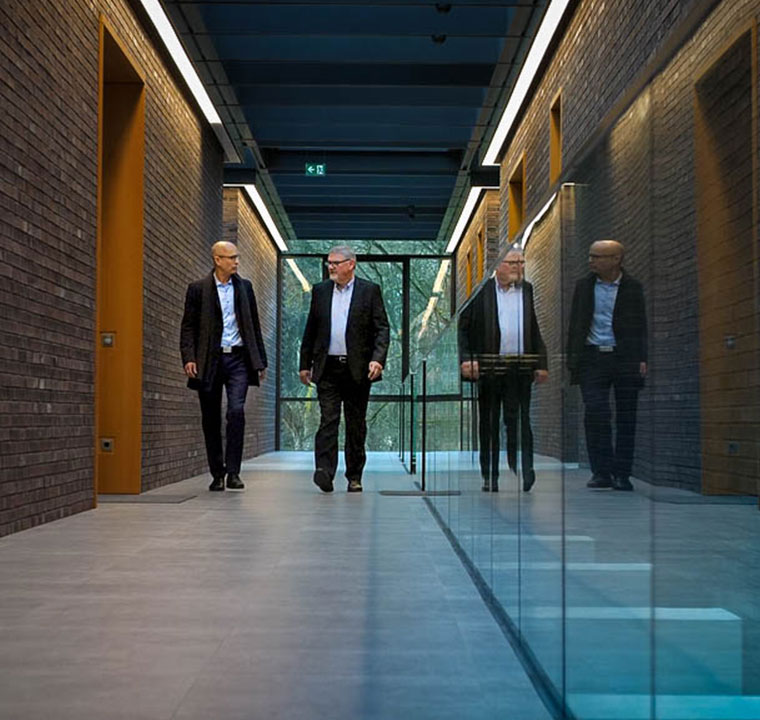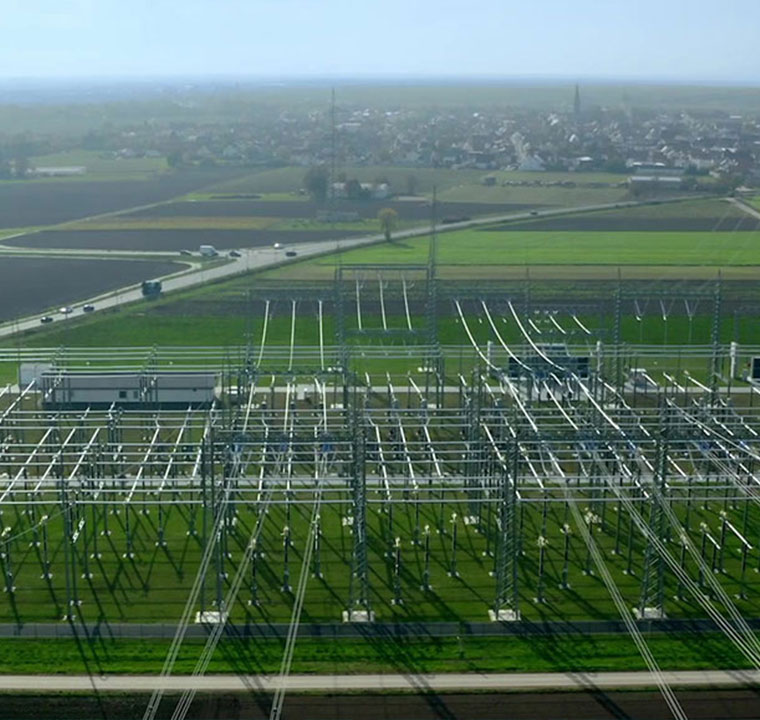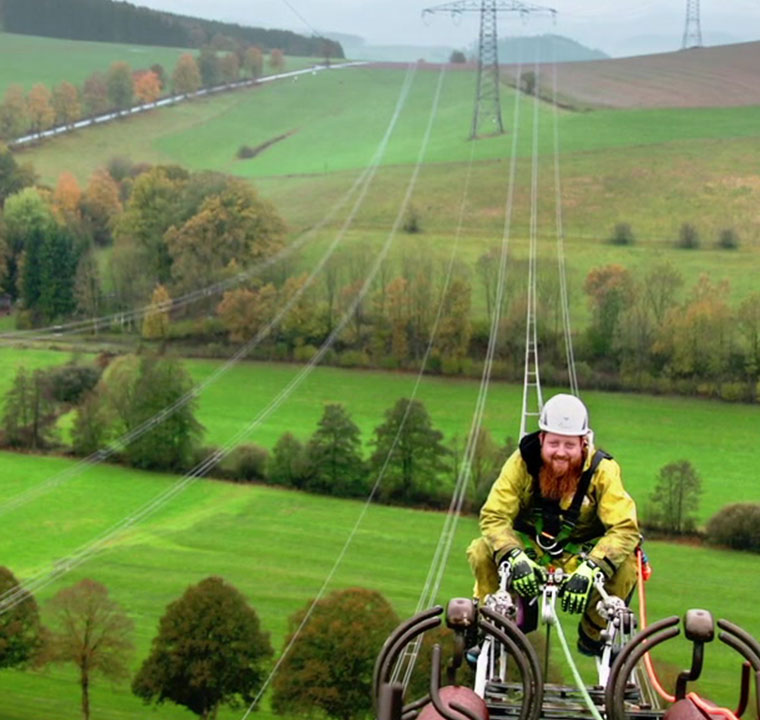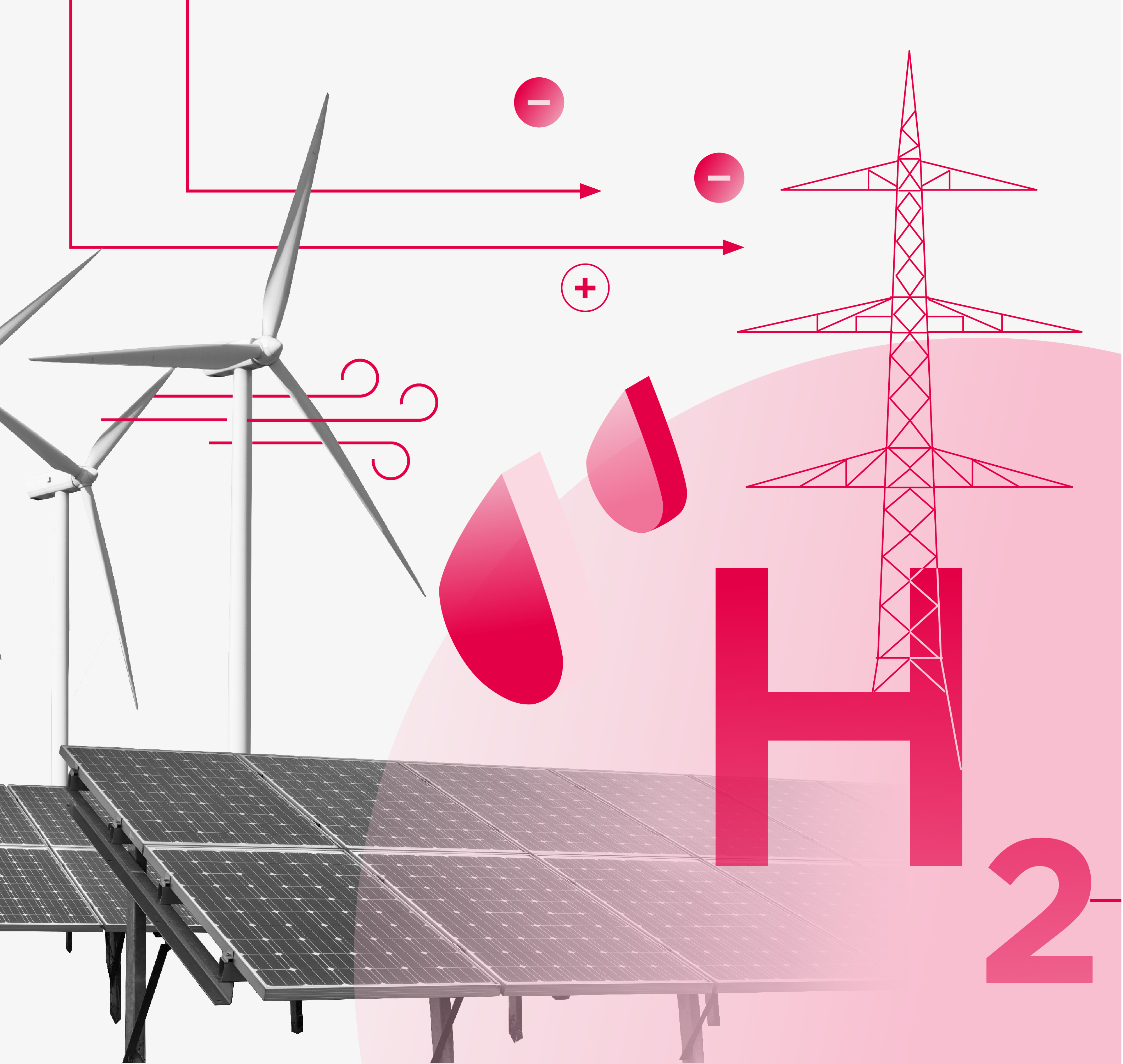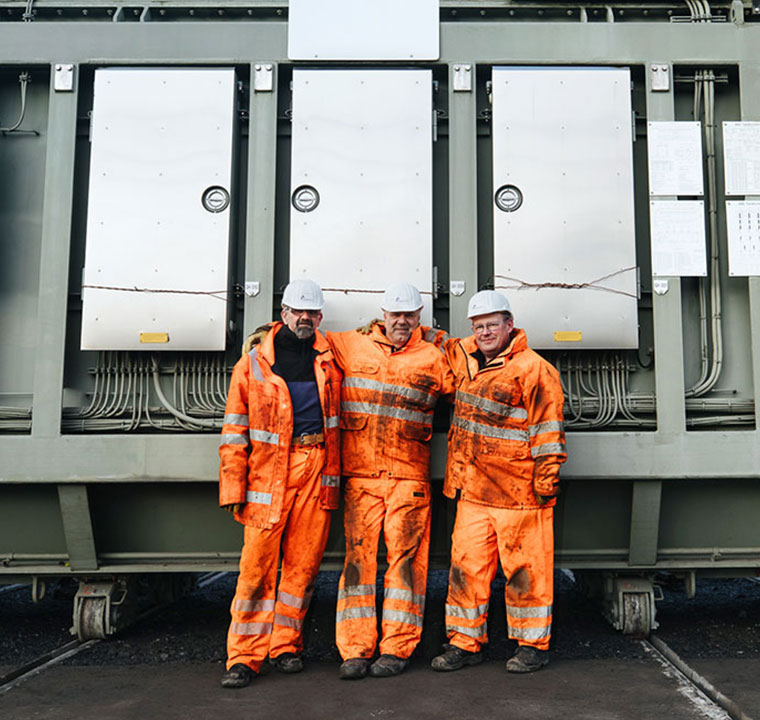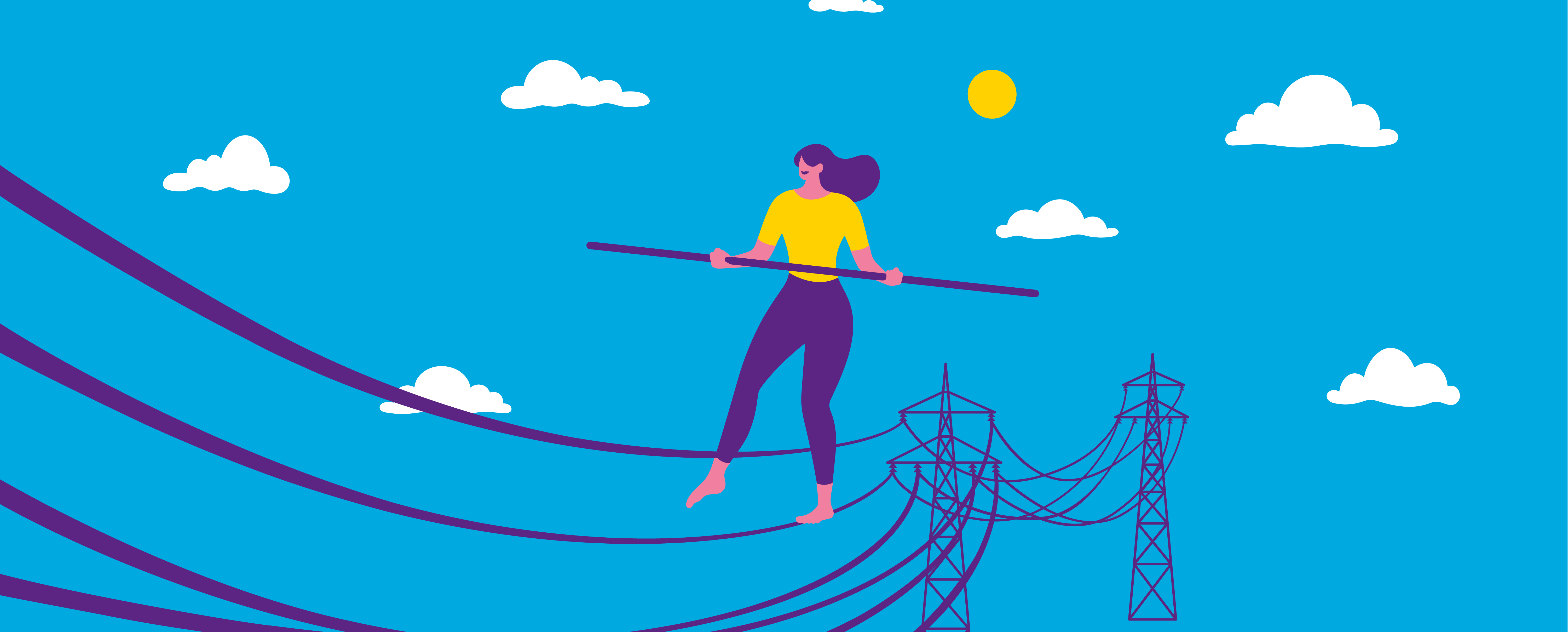
Always in equilibrium
What do a tightrope walker and a grid operator have in common? They do everything to maintain their balance. In the electricity grid, generation and consumption must be kept in equilibrium at all times. This is where the flywheel of generators helps.
An acrobat needs a great deal of practice to be able to walk a tightrope safely. A long balancing pole helps them to keep their balance. Our electricity grid also needs to be balanced to function properly: power generation and consumption must be in equilibrium at all times. When they are, the alternating current grid operates with a nominal frequency of 50 hertz. Plant and equipment installed in the network are set up to operate at this frequency, but are also able to function even if the frequency deviates slightly from this level. If deviations from the nominal frequency are more serious, disturbances can arise in the grid.
Transmission system operators have a range of measures at their disposal with which to balance out deviations. At Amprion, our System Operation and Control Centre in Brauweiler, near Cologne, carries out this important task by influencing the electricity feed-in and consumption levels. However, these measures take effect at different speeds. To balance out unforeseen deviations without delay, transmission system operators make use of a particular physical phenomenon: the inertia of heavy masses. This phenomenon can be observed when driving a car, when you take your foot off the accelerator: the vehicle initially continues to move at the same speed. In the generators of conventional power plants, rotors weighing several tonnes rotate at a speed that is synchronised with the grid frequency. If, for example, a power station somewhere in the grid fails, these flywheel masses continue to rotate and soften the drop in frequency. Experts speak of the “operating reserve”. In the case of the tightrope walker, it is the balancing pole whose mass initially counteracts unexpected fluctuations.
System without flywheel masses
By 2050, at least 80 per cent of electricity in Germany is to come from renewable energy sources. For many hours there will be no conventional power plants feeding into the grid. As a result, there will also be no flywheel masses in the system that stabilise the grid frequency. Staying with the analogy of the tightrope walker: the balancing rod gets shorter and shorter. Wind farms and photovoltaic installations, on which the power supply will in future be based, do not currently react immediately to deviations in frequency. The consequence of this: “In the event of major unexpected disturbances and fluctuations in the grid frequency, there is a real danger of the acrobat falling off the rope,” says Marvin Kaiser, Amprion expert on the behaviour of the power system.
This is why Amprion is working together with partners on new technical solutions. Such solutions could, for example, involve changing the behaviour of wind farms and photovoltaic installations so that they react immediately to frequency deviations. “We want to give the tightrope walker a long balancing pole again,” says Kaiser. “To keep the frequency in the power grid stable.”
Text Heimo Fischer
Illustration Lisa Tegtmeier
Illustration Lisa Tegtmeier

Always in equilibrium
What do a tightrope walker and a grid operator have in common? They do everything to maintain their balance. In the electricity grid, generation and consumption must be kept in equilibrium at all times. This is where the flywheel of generators helps.
An acrobat needs a great deal of practice to be able to walk a tightrope safely. A long balancing pole helps them to keep their balance. Our electricity grid also needs to be balanced to function properly: power generation and consumption must be in equilibrium at all times. When they are, the alternating current grid operates with a nominal frequency of 50 hertz. Plant and equipment installed in the network are set up to operate at this frequency, but are also able to function even if the frequency deviates slightly from this level. If deviations from the nominal frequency are more serious, disturbances can arise in the grid.
Transmission system operators have a range of measures at their disposal with which to balance out deviations. At Amprion, our System Operation and Control Centre in Brauweiler, near Cologne, carries out this important task by influencing the electricity feed-in and consumption levels. However, these measures take effect at different speeds. To balance out unforeseen deviations without delay, transmission system operators make use of a particular physical phenomenon: the inertia of heavy masses. This phenomenon can be observed when driving a car, when you take your foot off the accelerator: the vehicle initially continues to move at the same speed. In the generators of conventional power plants, rotors weighing several tonnes rotate at a speed that is synchronised with the grid frequency. If, for example, a power station somewhere in the grid fails, these flywheel masses continue to rotate and soften the drop in frequency. Experts speak of the “operating reserve”. In the case of the tightrope walker, it is the balancing pole whose mass initially counteracts unexpected fluctuations.
System without flywheel masses
By 2050, at least 80 per cent of electricity in Germany is to come from renewable energy sources. For many hours there will be no conventional power plants feeding into the grid. As a result, there will also be no flywheel masses in the system that stabilise the grid frequency. Staying with the analogy of the tightrope walker: the balancing rod gets shorter and shorter. Wind farms and photovoltaic installations, on which the power supply will in future be based, do not currently react immediately to deviations in frequency. The consequence of this: “In the event of major unexpected disturbances and fluctuations in the grid frequency, there is a real danger of the acrobat falling off the rope,” says Marvin Kaiser, Amprion expert on the behaviour of the power system.
This is why Amprion is working together with partners on new technical solutions. Such solutions could, for example, involve changing the behaviour of wind farms and photovoltaic installations so that they react immediately to frequency deviations. “We want to give the tightrope walker a long balancing pole again,” says Kaiser. “To keep the frequency in the power grid stable.”
Text Heimo Fischer
Illustration Lisa Tegtmeier
Illustration Lisa Tegtmeier



